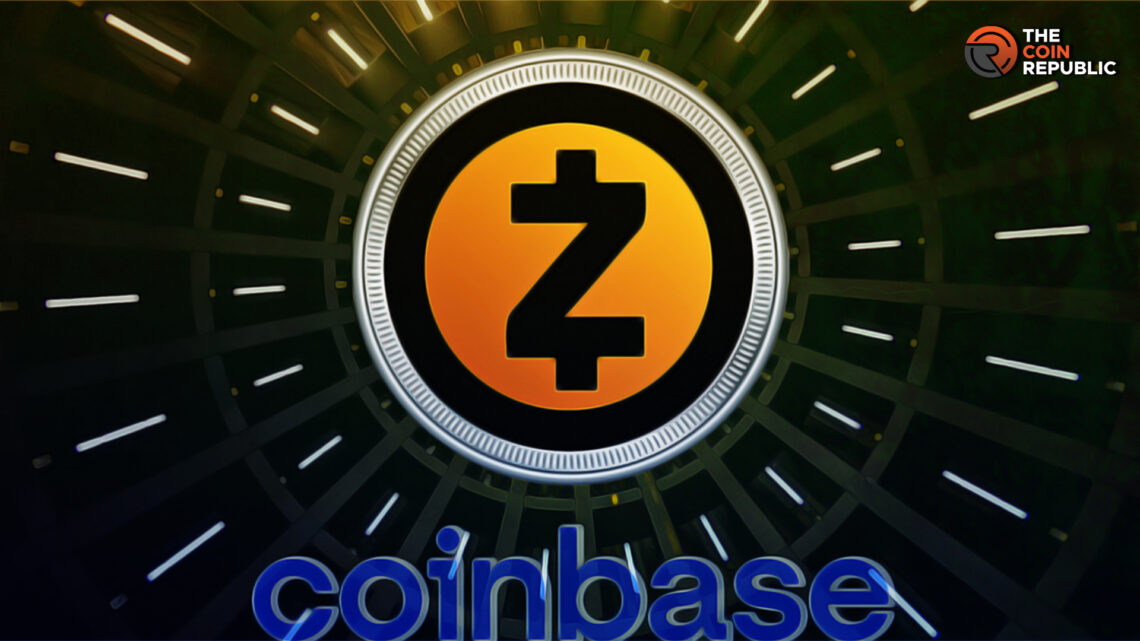- 1 Coinbase shared the news that one single entity is controlling more than 50% of computation power.
- 2 It raised major concerns among the entire crypto community because of many reasons.
- 3 ECC, the parent company of Zcash, gave clarity on the situation and hopefully assuaged the fear.
Blockchain networks are supposed to be decentralized. Their very foundation is based on the promise of equal distribution of profits. But there are times when the domain sees entities violating these norms blatantly. Something similar happened recently with the Zcash network and the whistleblower is none other than Coinbase.
What’s Brewing in the Zcash Network?
Coinbase recently issued a warning that caused havoc in the whole crypto community. It divulged that Zcash has a single entity that owns 53.8% of its hash rate. The exchange also informed that it took precautionary steps to rule out the possibility of attack. For the uninitiated, when a single entity takes control of half of the blockchain’s computational power, it becomes vulnerable as well.
Steps That Coinbase Took
Reportedly, Coinbase sprung into action as soon as it came to know the situation. It raised the requirement of Zcash confirmation to 110 blocks. As a result, the deposits on this network will take around 2.5 hours. Usually, they take about 40 minutes. At the same time, it would address the vulnerabilities of double-spending. Then, this condition arises when one entity has half of the computational power.
Furthermore, Coinbase took measures to keep the market upheavals at bay. It applied the “limit-only” mode to the Zcash trading. This would temporarily prevent the market bids of the concerned network. As per its statement, the exchange aired its concerns about this situation and issued some advisories as well. It suggested many tactics that either of the trading parties could use to curtail the risk of attack.
It also stated that it has started discussing this matter with ECC and ViaBTC.
Here’s How ECC Responded
Zcash is a subsidiary of the Electric Coin Company (ECC) and the latter responded. In an X ( formerly Twitter) post, ECC said that they’re aware of it and have talked to all the parties concerned. Those include Coinbase, ViaBTC, Zcash’s security head, and Zcash’s community grants lead. Notably, Zcash is a decentralized network with no centralized body over it.
However, it seemed that ECC acknowledged the issue that inherently exists in their network. More importantly, this frailty weakens their PoW blockchain further and Zcash isn’t impervious to it. But ECC said that it’s quite confident about its “Trailing Finality Layer” that gives finality to Zcash. It should be noted that ECC is also trying to shift Zcash from Proof-of-Work to Proof-of-Stake.
It also revealed that the platform is exploring the feasibility of the TFL’s hybrid network. Nathan Wilcox, the CTO of Zcash, is leading this endeavor. If it’s successful, it’ll be the intermediary solution for all firms that want a full switch of mechanisms. The tweet also mentioned switching to PoS is one of the four areas ECC is focusing on. Nathan Wilcox is fully dedicated to this one right now.
Upshot
Despite that, the activation of the TFL hybrid mechanism is something that the community will decide. On the other hand, some experts shed light on lateral facts. They said that a mining pool with inordinate distribution of computation power is not as vulnerable as a miner. Yet, the situation brought the focus on PoW’s vulnerabilities and the discussion might remain for a while.

Nancy J. Allen is a crypto enthusiast, with a major in macroeconomics and minor in business statistics. She believes that cryptocurrencies inspire people to be their own banks, and step aside from traditional monetary exchange systems. She is also intrigued by blockchain technology and its functioning. She frequently researches, and posts content on the top altcoins, their theoretical working principles and technical price predictions.


 Home
Home News
News










